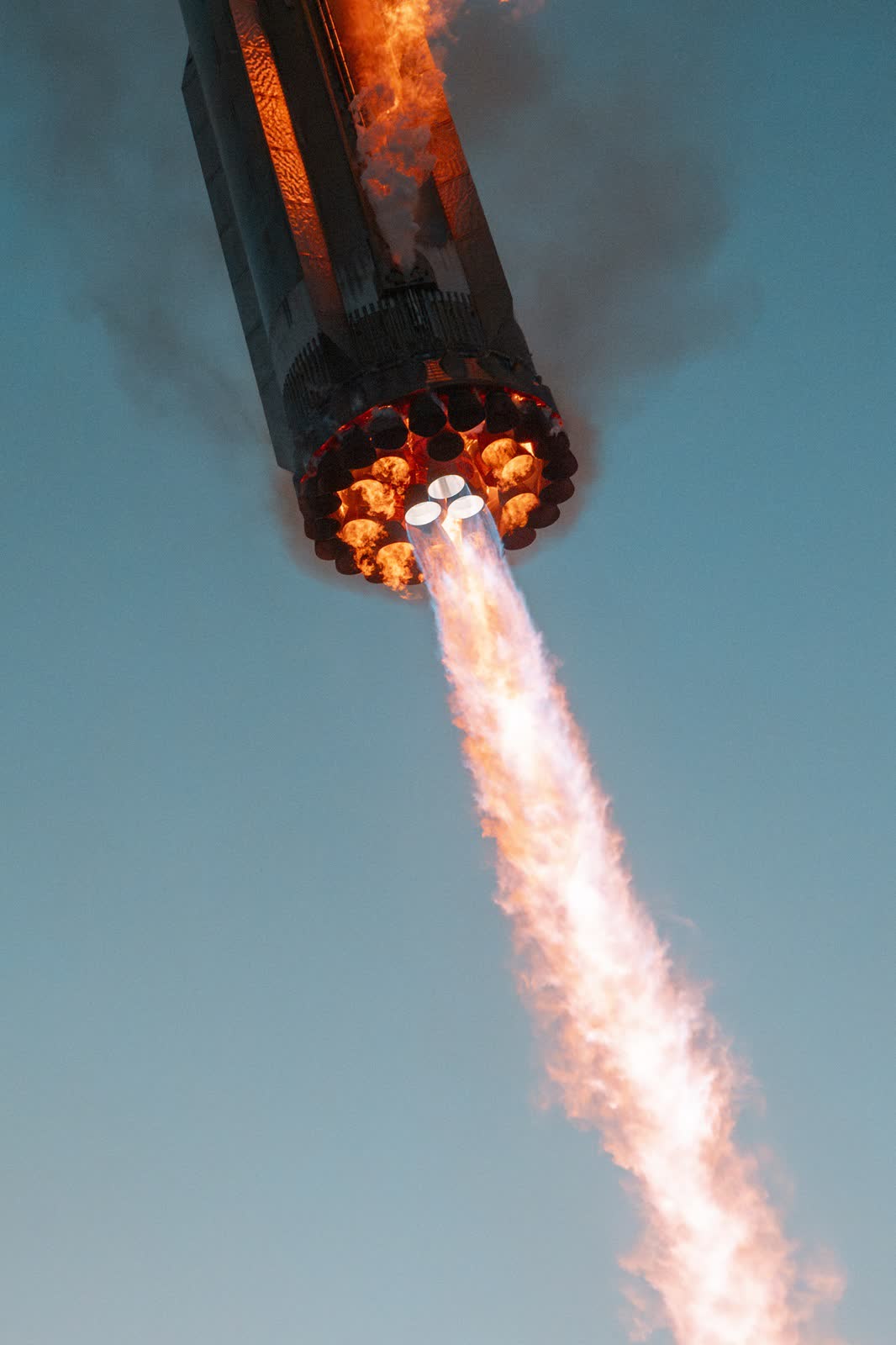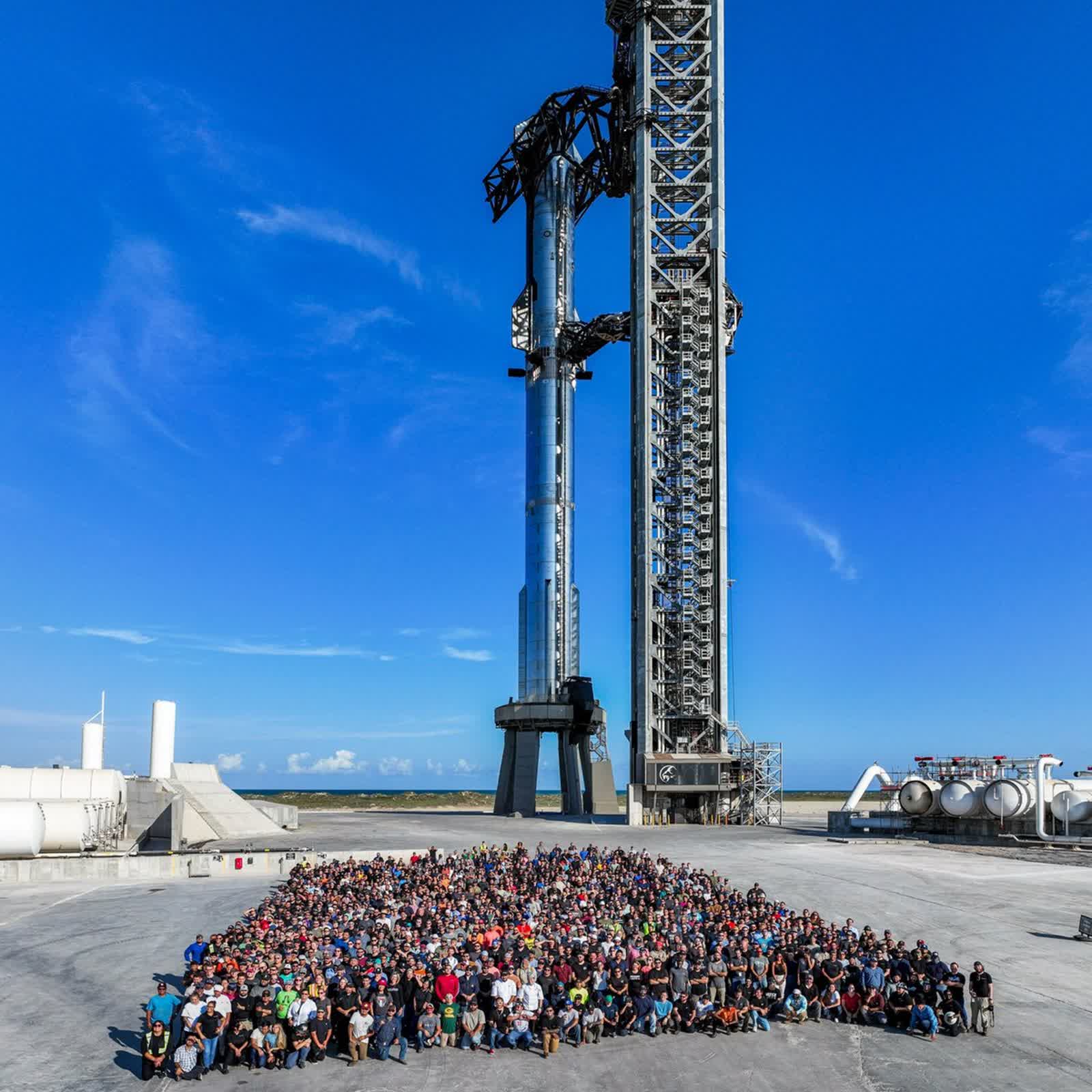Forward-looking: SpaceX achieved another milestone on Sunday, demonstrating the ability to launch and then recover its massive Starship rocket. It is an achievement that will make space travel more accessible and ambitious projects like Mars colonization more feasible than ever before.
SpaceX successfully launched and recovered its massive Starship rocket on Sunday, marking a significant leap forward in space exploration technology. The 398-foot-tall Starship, the world's largest and most powerful rocket, took off from SpaceX's Starbase facility in South Texas at 7:25 am CDT.
The launch was a spectacular sight, with the Super Heavy booster's 33 Raptor engines igniting simultaneously, producing 17 million pounds of thrust. This immense power, twice that of NASA's Saturn V rocket used for Moon missions, propelled the Starship skyward.
Mechazilla has caught the Super Heavy booster! pic.twitter.com/6R5YatSVJX
– SpaceX (@SpaceX) October 13, 2024
As the rocket ascended, it arced eastward over the Gulf of Mexico. The Super Heavy booster fired for over two and a half minutes, accelerating the vehicle to nearly 3,300 mph, before separating from the upper stage. The Starship continued its journey into space, powered by six additional Raptor engines.
The most remarkable aspect of this mission was the recovery of the Super Heavy booster. After reaching a peak altitude of 59 miles, the booster began its descent back to Earth. The massive booster used its engines to slow down and maneuver, positioning itself precisely over the launch pad.
This perspective is even more insane. pic.twitter.com/Yt35DwbF4w
– Seth Dillon (@SethDillon) October 14, 2024
Then, the launch tower's mechanical arms, nicknamed "chopsticks," successfully caught the descending booster. This catch occurred approximately 200 feet above the ground, with the booster suspended in mid-air by the tower's arms. It was "the first ever booster catch, a major step on the way to rapid reusability," said SpaceX's Dan Huot.
Meanwhile, the Starship upper stage continued its mission, completing a 40-minute cruise halfway around the world before re-entering Earth's atmosphere. The Starship successfully splashed down in the Indian Ocean, exactly where it was intended to land.
This test flight represents a major milestone in SpaceX's quest for fully reusable rockets.

The ability to catch and rapidly reuse the Super Heavy booster is crucial for multiple reasons. By dramatically lowering the cost of space launches, potentially by a factor of ten or more, reusability makes space missions more economically viable.
Also, SpaceX's goal is to reduce turnaround time between launches to just hours, which will increase launch frequency and open up new possibilities for space-based operations. Moreover, the Starship system's size and power allow for unprecedented payload capabilities, far surpassing current rockets and expanding the scope of potential missions.
This technology is also essential for NASA's Artemis program and SpaceX's ambitious plans for Mars colonization, paving the way for human exploration beyond Earth's orbit. Elon Musk, SpaceX's founder and CEO, envisions using this technology for regular Mars missions by as early as 2026.
